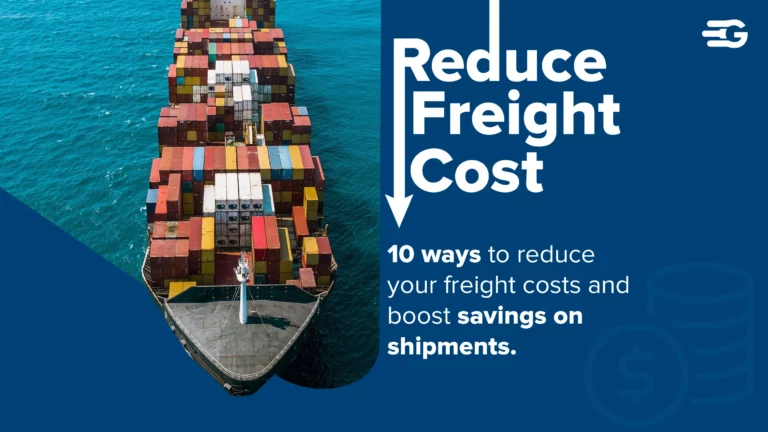What is Supply Chain Execution? Benefits and Strategies
Table of Contents
Efficient supply chain execution is vital for businesses aiming to deliver products on time, reduce costs, and maintain customer satisfaction. From handling orders to managing logistics, it involves precise coordination across multiple processes. Explore the definition, benefits, and strategies of supply chain execution, along with tips for selecting the best tools to streamline operations.
What is Supply Chain Execution?
Supply chain execution (SCE) refers to the real-time processes and systems used to deliver goods from suppliers to customers efficiently. It ensures that supply chain plans are carried out through seamless operations such as sourcing, manufacturing, inventory management, warehousing, and transportation. While supply chain planning sets strategies and forecasts, SCE is the practical side, ensuring the movement of goods and services happens as intended.
Effective supply chain execution is the backbone of operational efficiency. For example, businesses rely on precise coordination between warehouses, carriers, and distribution centers to meet customer demands on time. This is where supply chain execution software plays a critical role. These tools automate repetitive tasks, improve inventory tracking, and provide real-time updates, reducing errors and delays.
From my experience in logistics, even minor inefficiencies in execution, like a mislabeled shipment, can disrupt the entire process. Once, a delayed order due to poor coordination led to customer dissatisfaction and additional costs to expedite delivery. Implementing an automated system resolved this by improving accuracy and ensuring accountability across teams.
For businesses aiming to stay competitive, supply chain execution isn’t just about completing tasks; it’s about creating a reliable system that adapts to challenges and scales with demand.
Core Components of Supply Chain Execution
Effective supply chain execution relies on these core components:
1. Order Management
Order management handles customer orders, ensuring accurate and timely fulfillment. It involves checking inventory, processing orders, and coordinating with various teams. For example, automated order management systems prevent errors and speed up order processing.
2. Warehouse Management
Warehouse management optimizes the use of space, workforce, and equipment. Tasks include inventory tracking, order picking, and packing. I once visited a warehouse where manual tracking led to frequent stockouts. Introducing warehouse management systems improved accuracy and reduced wasted time.
3. Transportation Management
Transportation management focuses on selecting the right carriers, routes, and shipping modes. Real-time tracking tools help businesses monitor shipments and respond to delays quickly.
4. Labor Management
Labor management involves scheduling, training, and motivating employees. I remember a colleague’s productivity skyrocketing after receiving proper training and recognition. This shows how leadership and clear expectations can enhance team performance.
Integrating Supply Chain Execution with Supply Chain Planning
Supply chain execution works hand in hand with planning. While planning sets the direction, execution ensures goals are met. For instance, if demand forecasts indicate higher sales, execution adjusts inventory and logistics to match.
One of our clients once faced delays due to poor communication between their planning and execution teams. Introducing an integrated system bridged this gap, allowing for better coordination and timely deliveries.
Also Read: Top 12 Supply Chain Planning Software
Benefits of Effective Supply Chain Execution
Implementing robust supply chain execution strategies delivers tangible results, enhancing efficiency, reducing costs, and driving customer satisfaction. Here are the key advantages businesses can gain:
1. Enhanced Customer Satisfaction
Timely deliveries and accurate order fulfillment create positive customer experiences. Supply chain execution software further enhances satisfaction by offering real-time updates on order status, allowing customers to track shipments. This transparency builds trust and fosters loyalty, which is crucial in competitive markets.
2. Increased Operational Visibility
With real-time data, managers can monitor every aspect of the supply chain, from inventory levels to shipment statuses. This visibility helps identify potential bottlenecks early, allowing for proactive solutions. It also promotes better collaboration among suppliers, carriers, and logistics providers, ensuring smoother operations and fewer disruptions.
3. Significant Cost Savings
Streamlining resources such as labor, transportation, and storage leads to reduced overhead costs. Automated processes minimize manual errors, like incorrect data entry, which can result in costly corrections. Additionally, optimized transportation management, like choosing efficient routes and carriers, cuts fuel and shipping expenses, directly impacting the bottom line.
Effective supply chain execution doesn’t just reduce costs; it transforms how resources are utilized, creating long-term savings and operational resilience.
Challenges in Supply Chain Execution
Implementing an efficient supply chain execution system is no small feat. Businesses often encounter hurdles that can disrupt operations or delay results. Addressing these challenges head-on is key to achieving long-term success.
1. Integration Issues
Integrating supply chain execution software with existing systems, such as ERP or CRM platforms, can be highly complex. These systems often operate in silos, and ensuring seamless data flow requires extensive customization and technical expertise. Poor integration can lead to inconsistent data, delayed updates, and inefficiencies that undermine the benefits of automation.
2. Resistance to Change
Adopting new tools or processes often meets pushback from employees accustomed to traditional workflows. This resistance can stall implementation timelines and reduce the effectiveness of new systems. Clear communication, thorough training, and demonstrating the benefits of the changes are critical to overcoming this challenge.
3. Data Security Risks
Supply chain execution systems handle sensitive information, including supplier details, customer data, and operational metrics. This makes them a prime target for cyberattacks. Without strong encryption, firewalls, and regular audits, companies risk data breaches that can damage their reputation and disrupt operations.
4. Scalability Limitations
As businesses grow, their supply chain needs evolve. However, some execution solutions are unable to scale effectively. This can result in bottlenecks, such as delays in processing increased order volumes or handling multiple locations. Choosing software with built-in scalability ensures the system grows alongside the business, maintaining efficiency.
By identifying and proactively addressing these challenges, businesses can ensure their supply chain execution systems deliver the intended results.
How to Optimize Your Supply Chain Execution Strategy
1. Focus on Strategic Planning
Analyze your supply chain to identify inefficiencies. Plan warehouse locations, inventory levels, and transportation routes accordingly.
2. Strengthen Communication
Use tools that enable seamless communication between stakeholders. Timely updates on order status and inventory levels prevent disruptions.
3. Prioritize Tasks
Identify high-impact activities and focus on optimizing them. For instance, reducing inventory errors can significantly improve order accuracy.
4. Use Project Management Tools
Tools like Trello or Asana can streamline task management and improve coordination.
5. Outsource When Needed
Consider third-party logistics providers for tasks like warehousing and shipping. Their expertise can save time and reduce costs.
Top Supply Chain Execution Software
Selecting the right supply chain execution software is crucial for businesses looking to enhance efficiency, reduce costs, and maintain a competitive edge. With numerous options on the market, finding one that aligns with your specific needs can be challenging. Below are five top-rated platforms, each offering unique capabilities, features, and benefits.
Top Supply Chain Execution Software
1. GoComet
GoComet offers an AI-powered platform designed to streamline freight management with tools like automated RFQ management, real-time shipment tracking, and automated invoice reconciliation. It emphasizes cost reduction, data-driven decision-making, and transparent procurement.
Key Features:
- Real-time container tracking for actionable insights.
- Automated freight negotiation with compounded savings.
- Transparent and audit-ready RFQ processes.
- Comprehensive vendor performance analytics.
Limitations:
- Best suited for medium to large enterprises with established supply chain operations.
- Limited support for small-scale logistics providers.
Ratings: 4.8/5 on G2
User Insights: Clients praise its cost-saving capabilities and user-friendly interface, particularly for managing international logistics efficiently.
2. SAP Supply Chain Management
SAP Transportation Management (SAP TM) is a robust solution that integrates seamlessly with SAP’s ecosystem. It offers comprehensive tools for planning, execution, and monitoring of transportation processes.
Key Features:
- Demand planning and inventory optimization.
- Embedded AI and machine learning for predictive analytics.
- Extensive ERP integration for end-to-end visibility.
Limitations:
- High implementation cost and complexity.
- Requires significant training for full utilization.
Ratings: 4.3/5 on G2
User Insights: Known for its reliability and seamless integration with other SAP modules, but users often highlight the steep learning curve and cost.
3. Manhattan Associates
Manhattan Associates offers a suite of solutions that focus on warehouse, transportation, and inventory management. Its execution systems are tailored for businesses prioritizing warehouse efficiency.
Key Features:
- Unified warehouse and transportation management systems.
- Real-time tracking with IoT integration.
- Advanced labor management and reporting tools.
Limitations:
- Complexity in setup for smaller businesses.
- Limited customization for niche industries.
Ratings: 4.0/5 on G2
User Insights: Ideal for large-scale operations requiring detailed tracking and optimization. Users appreciate its robust features but note that initial setup can be challenging.
4. Oracle Supply Chain Management Cloud
Oracle OTM is a cloud-based logistics management solution ideal for enterprises with complex supply chains. It provides tools for planning, tracking, and optimizing global shipments.
Key Features:
- Integrated demand and supply planning.
- Comprehensive logistics and order management.
- Embedded AI for better forecasting and risk mitigation.
Limitations:
- Comparatively high subscription costs.
- Some users report challenges with customization.
Ratings: 4.0/5 on G2
User Insights: Users commend its adaptability and robust analytics but caution that smaller businesses might find it expensive.
5. Blue Yonder
Blue Yonder specializes in predictive analytics and AI-driven optimization for supply chain execution. It focuses on delivering agility and responsiveness across logistics processes.
Key Features:
- Real-time demand sensing and order orchestration.
- AI-powered transportation management.
- Scalability across diverse industries.
Limitations:
- Long implementation times.
- Requires skilled personnel to manage advanced features.
Ratings: 4.1/5 on G2
User Insights: Users highlight its predictive capabilities and strong industry alignment but recommend evaluating implementation timelines carefully.
Selecting the Right Supply Chain Execution Software
1. Assess Business Needs
Identify pain points in your supply chain. Whether it’s order management or transportation, choose software that addresses these issues.
2. Evaluate Vendors
Research software providers and compare features, scalability, and customer support. Look for positive reviews and case studies.
3. Ensure Compatibility
The software should integrate smoothly with your existing systems, such as ERP or WMS.
4. Prioritize Security
Choose software with robust data protection measures. Features like encryption and compliance with regulations are non-negotiable.
5. Test Before Buying
Request a demo or trial to evaluate functionality and ease of use. Involve your team to gather feedback.
Conclusion
Supply chain execution is essential for businesses to stay competitive. However, execution is just one part of the larger supply chain system. If you want to explore the entire supply chain, from sourcing to delivery, our well-explained supply chain guide provides a comprehensive introduction. By focusing on core components, overcoming challenges, and adopting the right software, companies can improve efficiency and customer satisfaction. Tools like supply chain execution software make it easier to streamline processes, reduce costs, and achieve long-term growth.
FAQs
1. What is supply chain execution software?
Supply chain execution software automates tasks like order processing, inventory tracking, and transportation management, ensuring smoother operations.
2. How does supply chain execution differ from planning?
Planning focuses on strategy, while execution involves putting these strategies into action through daily operations.
3. Why is visibility important in supply chain execution?
Visibility helps managers monitor inventory, track shipments, and identify bottlenecks, leading to better decision-making.
4. What challenges should I expect when implementing SCE software?
Challenges include system integration, employee resistance, and data security risks.
5. How do I choose the right supply chain execution software?
Assess your needs, evaluate vendors, prioritize security, and test the software before buying. Choose a scalable solution that integrates with existing systems.





